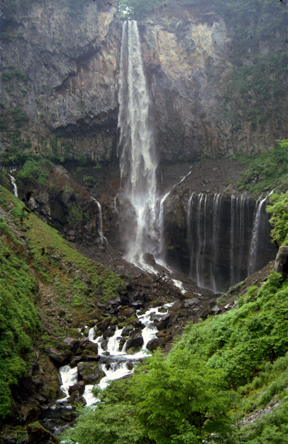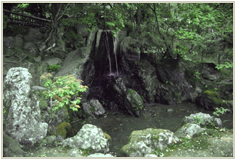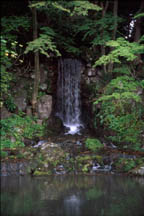Elements / Waterfalls
Waterfalls are sometimes the actual sources of water in Japanese gardens, while in other instances they are dry cascades (kare taki) in which stones simply suggest the fall of water. Both exist in various forms, ranging from a single cascade to one of multiple stages. Japan�s earliest known manual of gardening�the Sakuteiki�describes ten different forms of construction, stipulating the proper height and width of a cascade, and advising the reader on the appropriate types of stones. In addition to its natural and aesthetic appeal, the waterfall can also have philosophical overtones. Like the river of Heraclitus, it is always changing yet always there, a perfect symbol of the �permanent impermanence� of the universe as expressed in both Buddhist and Daoist thought. It is partly in that context that the waterfall plays such an important role in Chinese and Japanese landscape painting, an art form that probably inspired the creation of many Japanese gardens.
| (click thumbnail for larger image) | return to Elements |
||
 |
|||
| Kegon Falls | Chishaku-in | Ninomaru Garden, Nijo Castle | Ninomaru Garden, Nijo Castle |
| Ginkaku-ji | Hokongo-in | Saiho-ji | Seiryu-en |
 |
|||
| Murin-an | Tenryu-ji | Kinkaku-ji | Kenroku-en |









